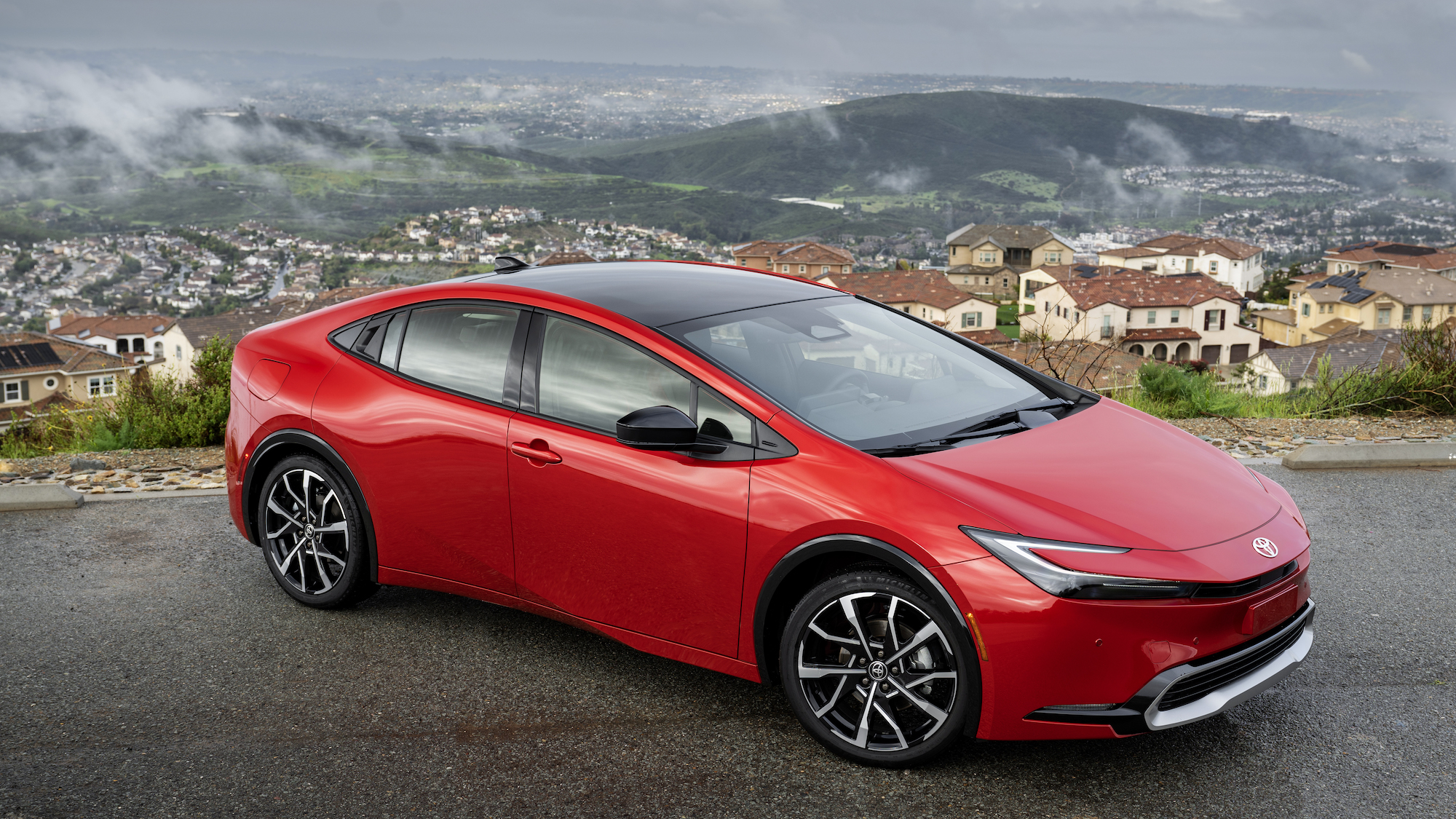

In August of last year, Toyota announced an additional investment of $2.5 billion in its new battery plant in Liberty, North Carolina. That’s on top of the $1.29 billion the company started with in November of 2021 when the new facility was established. And it’s well before the first battery is made on site, with production scheduled for 2025. It’s Toyota’s first-ever battery plant in North America and will qualify the brand’s vehicles for the $7,500 federal rebate for EVs.
Toyota isn’t waiting on its US battery timeline before pushing its newest plug-in hybrid to the market: the 2023 Prius Prime. Now sporting a larger 13.6 kilowatt-hour battery and a giant boost in all-electric range over the previous generation, the 2023 Prius Prime is the best version the brand has ever launched. And, in our opinion, the best in the Prius lineup.
Here’s what we know about Toyota’s newest plug-in hybrid.

Launched in 1997, the original Prius was touted as the world’s first mass-produced hybrid passenger vehicle. Over the last two decades or so, the Prius’ status has held steady, attracting celebrity fans and making a name for itself as a pioneer. Toyota has taken its learnings from the Prius and created a whole family of hybrid vehicles, boasting fuel efficiency while allaying range anxiety for those who want electrification but don’t wish to go all electric.
The Prius Prime, which was introduced in 2012, is the plug-in version of the popular hybrid. The Prime offers a key advantage over the typical Prius: it offers all-electric driving. For 2023, the Prius Prime SE now comes with up to 44 miles of all-electric range, a whopping 75 percent more than the 2022 offers. The XSE and XSE Premium models are boosted to up to 39 miles, as they are a bit heavier than the SE version.
The 44-mile number is notable because it exceeds the average number of miles Americans commute every day. According to research from AAA, people in the US drove about 33 miles per day in 2021, but the US Department of Transportation says that number was closer to 37 per day as of May of 2022 as the pandemic effect started to abate.
[Related: Hyundai’s new Ioniq 6 is a long-range EV with Art Deco vibes]
Toyota says it takes about 11 hours to recharge the Prius Prime with a household 120-volt outlet. Practically, you could plug in your car and a coffee maker at the same time. For faster charging, it takes four hours using a 240-volt outlet or home charger. And, of course, once the all-electric range runs out, the hybrid kicks in and you’ll enjoy fuel efficiency of about 52 miles per gallon in the SE trim or 48 mpg in the XSE and XSE Premium versions.
The automaker launched its reborn 2023 Prius hybrid at the end of 2022. It has significantly more power – Toyota increased the horsepower by 60 percent, from 121 to 194, and the Prius is showing off its improvements in a sleek new body. As a follow up, the Prius Prime takes that a step further. Using the same 2.0-liter, four-cylinder engine as the regular Prius, the Prime squeezes out 220 horsepower.
Aside from the power surge, why would anyone choose the Prius Prime over a regular Prius? By the numbers, the latter offers more overall range (644 miles versus 600 miles) and a lower price tag (the Prius is $28,545 versus the Prius Prime at $33,445). Plus, the Prime is available only with front-wheel drive while the Prius is offered with electric all-wheel drive. Aside from that 44-mile all-electric range, the Prime’s advantage comes down to speed.
With an all-electric battery pack pushing the Prius Prime, the car can zoom from zero to 60 miles per hour in a swift 6.6 seconds. For reference, that’s 0.4 seconds faster than a Prius and only slightly slower than Toyota’s GR86 sports car. Consider that the manufacturer’s RAV4 Prime, which has a 0-60 time of 5.7 seconds, is second only to the Supra sports car in Toyota’s lineup. That may explain why dealerships have a hard time keeping RAV4 Prime models on the lot, and the same is likely to be true for the Prius Prime.
